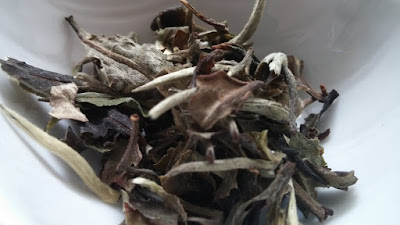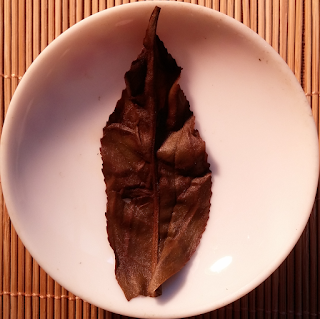(Part II)
(Part III)
(Part IV)
Hello. My daily grind recently outran me writing this blog, my apologies for that.
So here's the finale of my coffee vs. tea series. First, a summary of what I wrote about so far.
 |
| does anybody understand that Camellia mantis Kung Fu master? |
I've given a small introduction to coffee as tea's opponent, the evolution of its popularity, and my personal connection to the coffee world, which ironically came off as a late byproduct of my growing tea interest.
 Both of the drinks have massive potential in terms of taste and mouthfeel, including fruity and nutty, sweet and bitter, light and heavy, fresh and creamy. Depending on growing region and conditions, processing of the raw material and your method of preparing it, both beverages move widely across these and other categories and cannot be broken down to one typical taste description each. In my experience, tea is more strongly defined by the different associable aromas it contains, while in coffee, the specific taste profile is not as evident next to the coffee flavour itself. I'm not sure if this is just a question of experience though. In any case, you (or the respective person or people responsible) can somehow not-master really every step from growing, harvesting and processing to, of course, preparing, so there's the option of getting nothing special of a coffee or tea too.
Both of the drinks have massive potential in terms of taste and mouthfeel, including fruity and nutty, sweet and bitter, light and heavy, fresh and creamy. Depending on growing region and conditions, processing of the raw material and your method of preparing it, both beverages move widely across these and other categories and cannot be broken down to one typical taste description each. In my experience, tea is more strongly defined by the different associable aromas it contains, while in coffee, the specific taste profile is not as evident next to the coffee flavour itself. I'm not sure if this is just a question of experience though. In any case, you (or the respective person or people responsible) can somehow not-master really every step from growing, harvesting and processing to, of course, preparing, so there's the option of getting nothing special of a coffee or tea too.Speaking of preparation, I went over to discussing different preparation techniques and the question of convenience. There's uncountably many methods of which I picked the ones most popular in my judgement. It seems that coffee better cooperates with technology, as there are many different electric or even electronic devices to help you with it. Of course, you can also brew coffee completely manual, if you either don't care so much to pay for a machine or care too much to not fully remain at the wheel.
There are different possible levels of control over your tea brewing process too. You don't get to choose between that many devices though. In contrast, the process of (manually) preparing tea can even be the centre of your experience, different elaborate styles of tea ceremonies come with a meditative aspect and can make for a complete social event.
Filter coffee brings you nearly nothing except caffeine and hot water. This you can definitely count to your fluid balance, by the way. Caffeine lets the brain un-notice that you're tired and makes things hum in your body. Espresso additionally has some amounts of minerals and vitamins in stock. Coffee may help prevent type 2 diabetes and prostate cancer, on the other hand side you are very much in danger of developing an unpleasant caffeine dependency when hitting that cup frequently, and your stomach may not like the acids contained in dark roasted coffee.
Tea, varying between the different kinds, generally delivers caffeine as well, but not as much as coffee. Amongst others, the contained L-Theanine further smoothes out the caffeine kick and makes it both easier to handle short-term and less addicting long-term. Polyphenols, a type of antioxidants, come in much larger amounts that in coffee here, especially in green tea. They are said to have multiple cancer-inhibiting effects, but there's still much left to understand about them. Also, reduction of blood pressure and bad LDL cholesterol are probable effects of drinking tea. An ingredient to keep an eye on is fluoride though, as tea plants absorb this more than other plants and especially tea made of older (=bigger) leaves, such as Pu Erh and other Yunnan teas, can contain considerable amounts, so I'd not recommend these daily.
I think I'm gonna make up a short personal pro and contra list as a conclusion now. I haven't followed any argumentative structure throughout the texts, I've even actively avoided it. Since I am obviously a member of team tea writing this blog, and, as I mentioned, also found a connection to coffee via work, making a fair and un-pointful comparison makes the most sense from my perspective.

Pro Tea:
- Wide range of flavours
- Meditative experience (if wanted)
- Wares and extras work perfectly with collecting urge
- Health advantages
 |
| are these pineapple-apples? |
Contra Tea:
- Can get really expensive
- Steals all your shelf room
- Fine types require maximum attention

Pro Coffee:
- Works well with food or without attention
- Many interesting solutions for brewing
- Kicks you aware more efficiently
 |
| are these Mexican wrestler masks? |
Contra Coffee:
- Can get really expensive as well
- Provides a rather short experience
- Can't do as a health promoter
Enjoy your drinks! Thanks for reading.


































